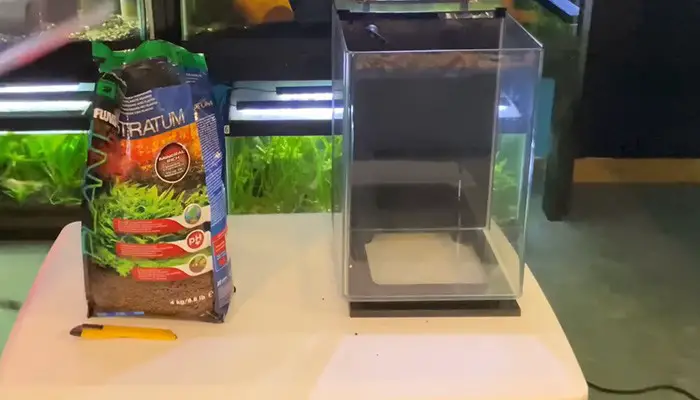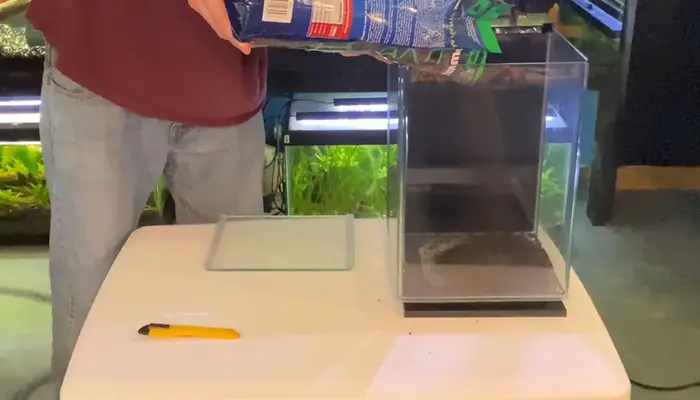How To Replace Fluval Stratum- Easy Guide
Fluval Stratum is one kind of volcanic soil that is collected from the foothills of a mountain called Aso in Japan. And this soil has a very nice and natural balance of essential nutrients which is very crucial for the growth and development of your aquatic plants.
Moreover, the Fluval stratum is one of the best choices for your tank substrate because it creates amazing water conditions in your tank and maintains most of the nutrient requirements.
Sadly since the Fluval stratum is all-natural compound, it deteriorates with time and after 2 or 3 years they need to be replaced otherwise the performance of the tank will not be as good as when it was new.
And if you have a lot more questions about the Fluval stratum especially if you are a beginner then the good news is this article is here to help you to replace the Fluval stratum of your tank in the correct way and it will also give you all the answers to your questions about them.
So, without making any delay let’s fire away–
Why Should You Use Fluval Stratum

There are many reasons to use this in your tank. First of all, it will help the roots of your aquatic plants to penetrate and establish faster than any other tank substrate. And with that, it will supply the plant with nutrients like potassium, phosphorus, and iron. This means, if you have this substrate in your tank you will need less additional fertilizer.
In addition, They are very light in weight and porus so if you have ghost shrimps in your tank then this soil will work as a safe hiding spot for them too.
Moreover, the Fluval stratum promotes the growth of good kinds of bacterias that helps to keep the water quality excellent. So if you are looking for a new tank substrate then this should be on the top of your list.
Why Should You Replace The Fluval Stratum
After a couple of years, the ball-like structures of the Fluval stratum start to break down, and gradually it disintegrates into small particles and loses all its nutrients. In this case, it becomes pretty much like clay soil. Moreover, it starts to release ammonia from the decomposing particles and changes the pH of the soil. And this is why they need to be changed every 2-3 years.
How To Replace Fluval Stratum In Your Tank

First, you have to clean the Fluval stratum before putting it in your tank. And since these are very delicate you have to know how to clean them properly without ruining the structure of the stratum.
It’s very important because mostly the Fluval stratum contains dust particles and moreover, the manufacturers also suggest be washed before use.
But if you ignore it and put it in your tank without washing then it can make the tank water dirty and also it will clog out the filters with dust particles.
So you have to pour the Fluval stratum into a fine kitchen strainer or colander and pour cold water gently over it. And remember that there should be no force of water as the particles can disintegrate into small pieces and drain away along with the dirt.
Now drain the water nicely from the Fluval stratum and put it in a bowl and pour water slowly. This step is done so that after adding it to the tank it will not make the tank water cloudy. But be sure that you don’t agitate it.
Before replacing them in the tank you have to prepare the tank first. So set up a big container and fill it with water and transfer all your fish, snails, and shrimp in it. Get the aquatic plants out of the tank too.
And then get rid of the old water. After that, empty the tank by taking out the old substrate and giving the tank a quick cleaning. Place the Fluval stratum very carefully and spread it over the tank.
And if you are using rock or any other hardscapes in the tank then place them beforehand. Because you don’t need to put the stratum under the rock as it will crush them into powders and it will not be worth it at all. Also if you add or move stuff around the tank after placing the substrate then there is a great chance that they will break the stratum.
Now comes the hardest part. As we have discussed above, the Fluval stratum is very delicate so you cannot just pour water over it like the other ones, and also you cannot stir up the water as well.
So, you have to place a large enough plastic container over the Fluval stratum and pour water gently on it with the help of a hose. The container will overflow and it will slowly fill the tank without causing any damage to the substrate.
You can also cap the Fluval stratum with dirt and soil but this step is completely optional. Capping with sand can help your plant give a better anchorage since the Fluval stratum is very light in weight. Also, capping can help to leach out the toxic substances at the bottom of the tank.
In this case, add an inch of dirt and 2-3 inches of dry sand, and then over that add the Fluval stratum just like mentioned previously.
During filling your aquarium, if you see some black or brown cloudy condition in the water, then don’t add more water. Because this substrate needs more than 24 hours to settle in. If you don’t stop adding water, the muddiness will only increase and cover a large area of the tank.
This is why you have to wait for the mud to settle down. However, a little bit of muddiness is nothing to worry about. And it’s normal to have some cloudiness in the water since this is the job of your tank filter to take care of.
How Much Fluval Stratum To Buy
Normally they are available in various quantities but an 8 kg pack will easily cover enough height for a medium size tank. Apart from that, if you are still wondering how much you will need, here is an easy way to calculate.
If you are looking to cover 1 inch or 2.5 cm depth with the Fluval stratum, then you will need about 5.5 lbs (2.4 kg) for every square foot surface of your tank. And if you wish to raise the level of the substrate then just multiply by the number. That means to cover 2 inch height per square meter, you will need twice the amount of Fluval stratum.
Frequently Asked Questions (FAQs)
Do I Need To Use Root Tabs With Fluval Stratum?
This is usually not necessary because the Fluval stratum itself provides the tank plants with enough nutrients. However, you can put some root tabs occasionally if you wish to have some additional benefits of essential nutrients and vitamins.
Can I Vacuum Fluval Stratum?
No, vacuuming is not a good idea because the Fluval stratum is a very delicate substrate. It will break the ball like structures and turn them into powders. And this action will result in a quick breakdown and deterioration of the Fluval stratum.
Can I Put Sand On Top Of The Fluval Stratum?
Yes, you can but it’s not recommended to put anything over the Fluval stratum as this can damage their structure. However sand is quite lighter than any other substances so you can mix it with Fluval stratum.
Does Fluval Stratum Raise Ammonia?
At the beginning, it does not produce ammonia but after a couple of years, the Fluval stratum starts to decompose and acidify the tank. And this is the period when you will see the ammonia levels in the aquarium have started to spike.
Is Fluval Stratum Good For Cherry Shrimp?
We know that the Fluval stratum is good for the shrimps as it provides a hiding place for them. But this is a bit different case because cherry shrimps prefer to be in inert substrates. Moreover, nutrient rich substrates are not their thing. Cherry shrimps do not thrive in active substrates like the Fluval stratum.
Conclusion
If you are looking for a perfect substrate to place on your aquarium, then you have to give Fluval stratum a shot. Because this is not just like any other substrate. It’s an active substrate that will keep providing your aquatic plants with vital nutrients.
Even though it deteriorates every couple of years, the best thing about this is you won’t have to worry about providing extra fertilizers for your aquatic plants at all as long as the Fluval stratum is active. Now, that you know everything about how to replace the Fluval stratum, you have nothing to worry about while handling it.
I hope you enjoyed reading this article. For further queries regarding the Fluval stratum, ask away in the comment section below.
- How The Turtle Got Its Shell – Your Ultimate Guide To Shell Dweller - October 28, 2025
- Types Of Saltwater Turtles – An Expert’S Guide To Species & - October 28, 2025
- Different Types Of Turtles For Pets – Your Guide To Lifelong Aquatic - October 28, 2025
